Eohomopterus
Wendy Moore- Eohomopterus aequatoriensis (Wasmann 1899)
- Eohomopterus centenarius Luna de Carvalho 1960
- Eohomopterus paulmuelleri Nagel 1987

- Eohomopterus poinari Nagel 1997

- Eohomopterus bonfilsi Moore and Davidson 2005
Introduction
The genus Eohomopterus contains four described species; two extant species, E. aequatoriensis (WASMANN, 1899) from Ecuador and E. centenarius LUNA DE CARVALHO, 1960 from Brazil, and two fossil species, E. paulmuelleri NAGEL, 1987 and E. poinari NAGEL, 1997, both from Dominican amber. These four species are known only from their respective holotype specimens. Eohomopterus is one of three extant paussine genera that contains fossil species.
Characteristics
Type Species
- Type Species: Homopterus aequatoriensis Wasmann, 1899, original monotypy.
- Type Locality: Semiradski, Ecuador.
- Holotype deposited at Museum National d'Historie Naturelle. Paris, France.
Discussion of Phylogenetic Relationships
Eohomopterus and its Old World counterpart, Carabidomemnus, together comprise the paussine subtribe Carabidomemnina which is thought to be the sister group of the remaining extant members of the tribe Paussini (Nagel 1987).
References
Luna de Carvalho, E. 1960. Paussides nouveaux ou peu connus du Muséum de Paris (Col. Carab. Paussus.). Revue Française d'Etomologie 27(2): 144-154.
Luna de Carvalho, E. 1963. Paussideos Americanos (Col. Carab. Pauss.). Memorias e Estudos do Museu Zoologico de Universidade de Coimbra 283: 1-22.
Moore, W. and R. Davidson. 2005.
Nagel, P. 1980. Aspects of the evolution of myrmecophilous adaptations in Paussinae. On the Evolution of Behavior in Carabid Beetles. (Ed. by P.J. Den Boer, H.U. Theile and F. Weber), Miscellaneous Papers, 18, 1979, 15-34. Agricultural University Wageningen, The Netherlands.
Nagel, P. 1987. Fossil ant nest beetles (Coleoptera, Carabidae, Paussinae). Entomologische Arbeiten aus dem Museum G. Frey 35/36: 137-170.
Nagel, P. 1997. New fossil paussids from Dominican amber with notes on the phylogenetic systematics of the paussine complex (Coleoptera: Carabidae). Systematic Entomology 22: 345-362.
Wasmann, E. 1899. Neue Paussiden, mit einem biologischen Nachtrag. Notes from the Leyden Museum 21(5): 33-52.
Wasmann, E. 1919. Wissenschaftliche Ergebnisse der Deutschen Zentral-Afrika-Expedition 1907-1908, unter Führung Adolf Friedrichs, Herogs zu Mecklenburg. Tijdschirift voor Entomologie 62: 8-130.
Title Illustrations

| Scientific Name | Eohomopterus centenarius |
|---|---|
| Specimen Condition | Dead Specimen |
| Sex | Male |
| Life Cycle Stage | adult |
| Collection | Muséum National d'Histoire Naturelle, Paris |
| Type | Holotype |
| Image Use |
 This media file is licensed under the Creative Commons Attribution-NonCommercial-ShareAlike License - Version 3.0. This media file is licensed under the Creative Commons Attribution-NonCommercial-ShareAlike License - Version 3.0.
|
| Copyright |
© 2004 Wendy Moore

|
| Scientific Name | Eohomopterus bonfilsi |
|---|---|
| Specimen Condition | Dead Specimen |
| Sex | Male |
| Life Cycle Stage | adult |
| View | habitus |
| Type | Holotype |
| Image Use |
 This media file is licensed under the Creative Commons Attribution-NonCommercial-ShareAlike License - Version 3.0. This media file is licensed under the Creative Commons Attribution-NonCommercial-ShareAlike License - Version 3.0.
|
| Copyright |
© 2004 Wendy Moore

|
| Scientific Name | Eohomopterus aequatoriensis |
|---|---|
| Specimen Condition | Dead Specimen |
| Sex | Male |
| Life Cycle Stage | adult |
| View | habitus |
| Type | Holotype |
| Image Use |
 This media file is licensed under the Creative Commons Attribution-NonCommercial-ShareAlike License - Version 3.0. This media file is licensed under the Creative Commons Attribution-NonCommercial-ShareAlike License - Version 3.0.
|
| Copyright |
© 2004 Wendy Moore

|
About This Page
Wendy Moore

University of Arizona, Tucson, Arizona, USA
Correspondence regarding this page should be directed to Wendy Moore at
Page copyright © 2009 Wendy Moore
 Page: Tree of Life
Eohomopterus .
Authored by
Wendy Moore.
The TEXT of this page is licensed under the
Creative Commons Attribution-NonCommercial-ShareAlike License - Version 3.0. Note that images and other media
featured on this page are each governed by their own license, and they may or may not be available
for reuse. Click on an image or a media link to access the media data window, which provides the
relevant licensing information. For the general terms and conditions of ToL material reuse and
redistribution, please see the Tree of Life Copyright
Policies.
Page: Tree of Life
Eohomopterus .
Authored by
Wendy Moore.
The TEXT of this page is licensed under the
Creative Commons Attribution-NonCommercial-ShareAlike License - Version 3.0. Note that images and other media
featured on this page are each governed by their own license, and they may or may not be available
for reuse. Click on an image or a media link to access the media data window, which provides the
relevant licensing information. For the general terms and conditions of ToL material reuse and
redistribution, please see the Tree of Life Copyright
Policies.
- First online 13 March 2009
- Content changed 13 March 2009
Citing this page:
Moore, Wendy. 2009. Eohomopterus . Version 13 March 2009 (under construction). http://tolweb.org/Eohomopterus/24889/2009.03.13 in The Tree of Life Web Project, http://tolweb.org/




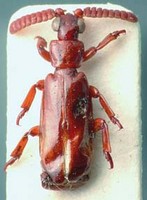

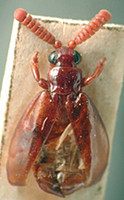
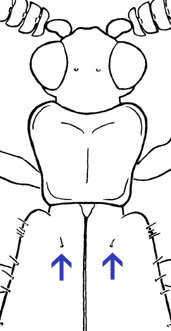
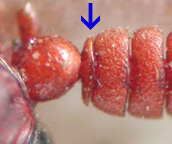
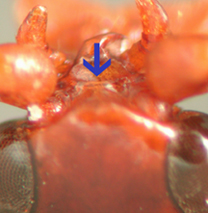






 Go to quick links
Go to quick search
Go to navigation for this section of the ToL site
Go to detailed links for the ToL site
Go to quick links
Go to quick search
Go to navigation for this section of the ToL site
Go to detailed links for the ToL site